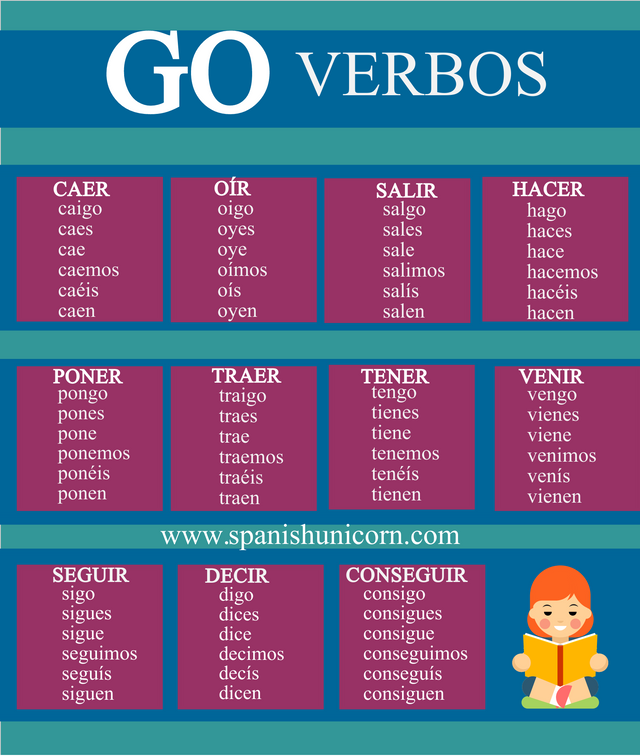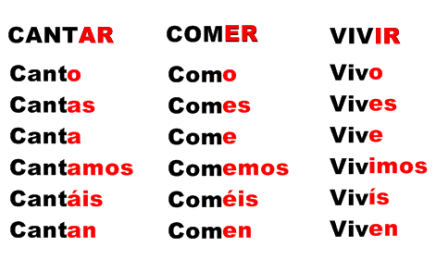Spanish grammar course: Irregular present tense verbs.

What is an irregular verb?
It’s a verb whose conjugations are different or change from the original verb. The Last class, I said that the infinitive verbs whose endings are –ar –er –ir have a determine ending. They are regular verbs. Look at this tablebox. These are regular verbs and its endings. Last class here

There are some irregular verbs in Spanish (look at the first picture above). They change partial or totally the form of the original verb when they are conjugated. Pay attention to its verbal endings.
Now look at the following examples:
Volar (to fly) (presente tense)
Conjugation
Yo (I) vuelo (fly)
Tú (you) vuelas (fly)
Ella, él, eso (she/he/it) vuela (flies)
Nosotros (we) volamos (fly)
Ustedes, ellos, ellas (you/they) vuelan (fly)
Notice the infinitive verb to be conjugated has partially changed
Querer (to want) (presente tense)
Conjugation
Yo (I) quiero (want)
Tú (you) quieres (want)
Ella, él, eso (she/he/it) quiere (wants)
Nosotros (we) queremos (want)
Ustedes, ellos, ellas (you/they) quieren (want)
Notice the infinitive verb to be conjugated has partially changed
Ir (to go) (presente tense)
Conjugation
Yo (I) voy (go)
Tú (you) vas (go)
Ella, él, eso (she/he/it) va (goes)
Nosotros (we) vamos (go)
Ustedes, ellos, ellas (you/they) van (go)
Notice the infinitive verb to be conjugated has totally changed
Excercises: conjugate the following irregular verbs.
Dar - tener - venir
Well that's all friends, in the next post, we will continue with more classes to learn the grammar of Spanish. Review all classes and practice the exercises given. Any questions make your comment. Until next time. Next post in 72 hours.
